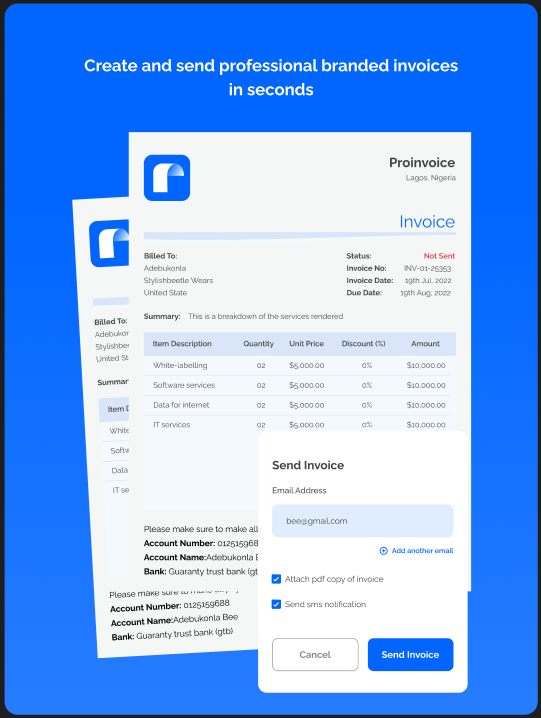In the fast-paced world of business, knowing how to create an elevator pitch is more than just a communication tool; it’s your ticket to making a memorable first impression.
For small business owners, mastering the art of the elevator pitch can be a game-changer.
This comprehensive guide will walk you through the process of creating an engaging and compelling elevator pitch.
We will provide an in-depth look at each step, offering practical advice and real-world examples to help you craft the perfect elevator pitch.
Step-by-step guide on How To Create An Elevator Pitch
Captivating Your Audience
The first element of a successful elevator pitch is to capture your audience’s attention right from the start. This is your golden opportunity to stand out and engage your listener.
A Hook that Sparks Curiosity
Begin with a hook that ignites curiosity. For instance, “Imagine doubling your business’s growth in just 60 seconds.”
A Relevant Statement
Follow up with a statement that directly addresses your audience’s needs or challenges. Let them know that you understand their pain points.
For instance, “In today’s competitive market, finding a way to gain a competitive edge is crucial.”
Deepening Their Engagement
Once you’ve captured their attention, it’s time to deepen their interest. This is where you provide a bit more information to keep them engaged.
Highlighting Your Value Proposition
Explain what makes your product or service unique and valuable. Focus on the problems it solves and the benefits it offers.
For instance, “Our innovative solution has helped countless businesses like yours streamline their operations and save both time and money.”
The Power of Storytelling
Weave a brief story into your pitch. Stories have the ability to connect on an emotional level and enhance engagement.
Share a success story or a moment of realization that led to your solution. For instance, “Let me share the story of a client who, after implementing our strategies, saw a 50% increase in their annual revenue.”
Creating a Need for Your Solution
Now that you’ve piqued their interest, it’s time to create desire. You want your audience to want what you’re offering.
Presenting the Benefits
Clearly outline the benefits of your product or service. Explain how it can improve their life or solve their problems.
Be specific and focus on what’s in it for them. For instance, “Our solution not only boosts efficiency but also increases your bottom line.”
Demonstrating Success
Provide concrete examples or testimonials that prove the value of your solution. Testimonials and success stories build trust and create a strong desire for what you’re offering.
For instance, “We’ve helped businesses of all sizes achieve remarkable results. Just listen to what our satisfied clients have to say.”
Guiding the Next Step
Your elevator pitch is almost complete. The final element of your pitch is to guide your audience toward taking action.
A Clear Call to Action
Clearly state what action you’d like them to take next. It could be scheduling a meeting, visiting your website, or simply keeping your contact information.
For instance, “I’d love to discuss how our solution can benefit your business. Let’s schedule a meeting to explore further.”
Offering Contact Information
Make it easy for your audience to reach out. Provide your contact information, business card, or a website link. For instance, “Here’s my card, and you can also find more information on our website’’
Practical Tips for Crafting Your Elevator Pitch
Now that you have the fundamental elements of an elevator pitch, here are some practical tips to help you refine it:
Conciseness: Keep your pitch under 30 seconds. Practice until it feels natural and unforced.
Know Your Audience: Tailor your pitch to the specific needs and interests of your audience.
Clarity: Use straightforward language and avoid jargon that might confuse your audience.
Practice Makes Perfect: Rehearse your pitch until it flows effortlessly. Seek feedback and make necessary improvements.
Solution-Oriented: Emphasize the solution you’re offering and how it benefits your audience.
Avoid Overloading: Focus on the most crucial points. Too much detail can overwhelm your audience, so stick to the essentials.
Use Powerful Language: Choose impactful words and replace vague terms with specifics.
Adapt and Personalize: Customize your pitch for different situations and adapt it as your business evolves.
Creating a compelling elevator pitch is a skill that can make a significant difference for your small business especially when you are looking at getting investors for your business.
By applying these practical tips, you’ll be well-prepared to craft a pitch that leaves a strong impression and opens doors to new opportunities.
Remember that practice is key, and a well-crafted pitch can be a powerful tool for success in the business world.
Additional Tips for Crafting Your Elevator Pitch
Body Language: Pay attention to your body language when delivering your pitch. Maintain eye contact, use confident posture, and ensure your gestures are in sync with your words.
Relevance: Ensure your pitch remains relevant to your audience. Tailor it to address their specific pain points or interests.
Feedback: Seek feedback from trusted colleagues, mentors, or advisors. They can provide valuable insights and help you refine your pitch further.
Networking: Take advantage of networking opportunities to test your pitch and gain valuable experience. The more you practice in real-life scenarios, the more refined your pitch will become.
Expanding Your Elevator Pitch
While brevity is key in an elevator pitch, there may be occasions when you need to provide more information.
In such cases, consider having a longer version of your pitch ready, often called the “extended elevator pitch.”
This version can be a couple of minutes long and provides a more detailed overview of your business, products, or services.
Remember, your elevator pitch is a dynamic tool that can adapt and evolve as your business grows. Keep refining it, practicing it, and using it to seize opportunities and propel your small business to greater heights.
With these additional insights, your elevator pitch will be even more robust and capable of making a lasting impression.
As you continue to hone your skills and embrace the art of the elevator pitch, you’ll find that it’s not just a business tool—it’s a pathway to new connections, partnerships, and growth. Elevate your pitch, and you’ll undoubtedly elevate your business.













